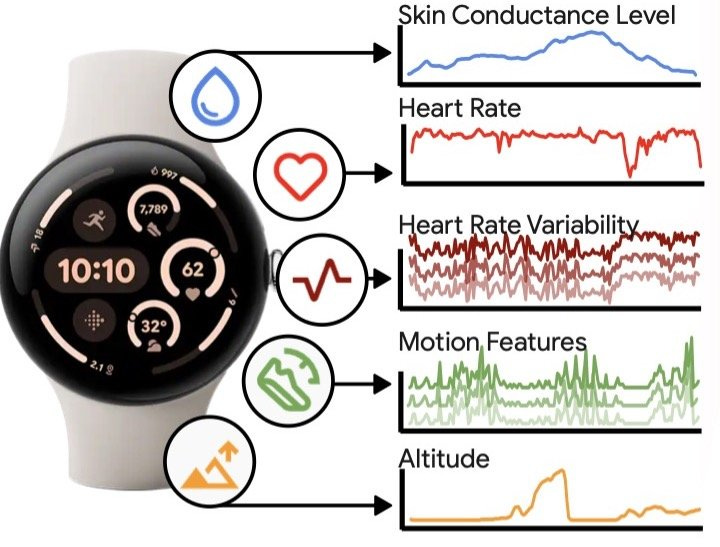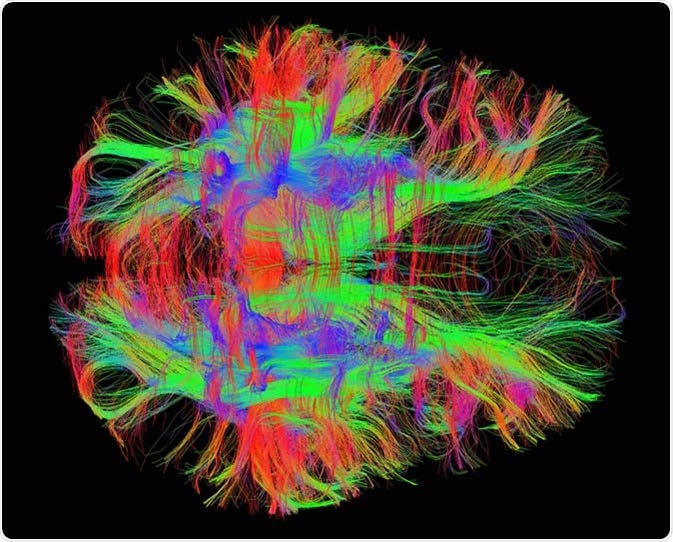Consumer Brain Health—Next Gen Wearables?
Consumer health tech is booming. The next generation will include brain health scores, but how will this look?
Three years ago, Whoop hit a staggering $3.6B valuation. Last week, Oura joined the club with a $5B valuation, boosted by its partnership with Dexcom. These successes demonstrate the growing demand for consumer health devices that provide actionable insights into metabolic and physiological health. But as the wrist becomes prime real estate for wearables, one critical frontier remains untapped: brain health.
This article explores lessons from existing consumer health technologies and proposes the key features and capabilities that will define the most compelling brain health wearables. As the consumer health tech landscape evolves, companies often follow one of two paths: a science-first approach, grounded in innovative, high-quality data and research, or a marketing-first strategy, which prioritizes user appeal and quick scalability over scientific rigor. Our strong preference lies with science-first models, where the foundation is built on robust physiological understanding and technological innovation.
For brain health wearables to succeed, algorithms must be powered by high-quality data—moving beyond proxy measures or statistical correlations often used in today’s devices based on convenience metrics. Diving into the Google research team’s publication “Scaling wearable foundation models,” it is clear that the algorithms can only interpret the signals in which they are fed. Physiologists and technologists must collaborate to define the inputs that matter most for meaningful insights. Without an interdisciplinary focus at the outset, consumer brain health tech risks being yet another product delivering surface-level insights instead of actionable and meaningful understanding of our own health and physiology.

The Evolution of Consumer Health Wearables
Devices like Oura and Whoop collect physiological data such as (often based on sensing technologies that have existed for awhile, but are empowered by algorithms trained on large datasets):
Heart Rate (HR) and Heart Rate Variability (HRV): Key metrics for understanding recovery, stress, and fitness levels.
Pulse Oximetry: Measuring blood oxygen levels.
Respiratory Rate: Tracking breathing patterns.
Skin Temperature: A proxy for stress and illness.
Glucose Monitoring (via interstitial fluid): Pioneered by companies like Dexcom.
Even metrics like step count and VO₂ max—a gold-standard measure of cardiovascular fitness—are being approximated through wearables (side note, does anyone know where the VO2max dataset is from? Or what the error rates are? Gold standard VO2max tests are hard to collect!). Advances in algorithmic interpretation allow for features like sleep tracking, which estimates REM and deep sleep stages, offering a convenient alternative to polysomnography-based sleep studies.
The Challenge of Measuring Brain Health
Unlike heart rate or glucose, brain activity is notoriously difficult to measure non-invasively. Most brain monitoring methods, such as functional MRI (fMRI) or positron emission tomography (PET), require cumbersome setups and specialized environments. Yet, the potential benefits of understanding real-time brain function are vast, ranging from optimizing focus and productivity to early detection of neurological conditions. Then again, conducting VO₂ max and Polysomnography tests are also not feasible, and with large enough datasets correlations with these gold standard metrics are now mainstream and can be linked to data from our wrist.
So, what would a consumer brain health wearable need to do to succeed in the market?
Features of a Winning Consumer Brain Health Wearable
Provide Real Physiological Metrics (Not Just Proprietary Scores):
Part of the appeal of Whoop and Oura lies in their ability to report raw physiological data (e.g., HR, HRV, temperature) alongside proprietary scores like “Recovery” or “Readiness.” This transparency not only builds trust but allows users to relate these measures to broader scientific research.
A brain health wearable could report metrics like:
Brain Blood Flow (BBF): Measured in mL/min, providing insight into cerebral perfusion. (these could be compared to functional MRI studies)
Brain Oxygenation Levels: Indicating how well oxygen is being delivered to and utilized by the brain— tools like NIRS (non-invasive) or functional PET (much more invasive) can measure this
Variability in Brain Activity: Offering insights into how the brain responds to stress, tasks, or exercise.
Brain Metabolite Concentrations: Magnetic resonance spectroscopy or PET studies are able to measure things like quantities of ATP and neurotransmitters like glutamate and GABA, while PET can measure glucose uptake. The brain is a metabolic machine after all.
Functional Connectivity: Imagine watching individual changes in connectivity after weeks of an exercise regimen, meditation routine, or even moving to a new city or starting a new job.
By reporting real metrics, the device could leverage findings from fMRI, MRS, or PET studies and other research conducted rigorously in academia to provide meaningful context and actionable insights.
Seamless Wearability Across Contexts:
To be viable, the device must be wearable during exercise, sleep, and daily activities without compromising comfort or style. Possible designs include:
A sleeping mask for nighttime monitoring (maybe?)
A headband or hat for exercise or daytime use. (perhaps?)
Sleek and unobtrusive design will be critical for adoption, as no one wants to wear a bulky contraption.
User Experience (UX) Must Be Frictionless:
A winning device would work without requiring complex setup every time it’s used. Think of how easily we can put on a smartwatch and instantly start tracking data. Similarly, a brain health device should offer seamless operation and effortless syncing with an app or dashboard.
Sensitivity and Range in Measurement:
Precision matters. For example, a device measuring brain blood flow should detect even small changes, offering sensitivity down to milliliters per minute. Wide measurement ranges are equally essential to capture both low and high extremes of brain activity in various states—rest, exercise, or stress.
Actionable and Personalized Insights:
Generic advice like “reduce stress” or “sleep more” can only go so far. (has anyone else taken their Whoop off when traveling because they don’t need to know how shi**y they know their sleep is going to be?)
Insights must be tailored to the individual and easy to implement. For example, if the device detects reduced oxygenation during a specific activity, it could recommend adjustments to improve performance or recovery.
Maximize Health Benefit:Time Ratio:
Consumers are busy. The time spent engaging with the device or its app should deliver clear value—helping users make tangible improvements in their lives without requiring hours of interpretation or data analysis.
Why Real Metrics Matter
One of the most compelling arguments for including real metrics (not just proprietary scores) is their link to broader research. If a brain health wearable only reported a “Focus Score,” users would lack the ability to understand the “why” or the science behind it. Real metrics like brain blood flow or oxygenation can be tied to established studies, allowing users—and scientists—to build a deeper understanding.
For example, studies using fMRI could inform users about how changes in brain blood flow relate to cognitive performance, mood, or long-term brain health. This bridge between raw data and research-based insights is essential for credibility and user engagement. I’m selfishly wondering if my first-ever undergraduate publication (that stopping exercise in older athletes results in a decrease in cerebral blood flow) will have a real world, measurable, application. Imaging being able to track changes in response to sleep, exercise, and various behaviors so you know functional metrics of your brain age.

The Consumer Brain Health Revolution: What’s Next?
The pieces are falling into place for brain health wearables. Advances in sensor technology, miniaturization, and algorithmic processing are making it increasingly feasible to measure brain activity non-invasively. At the same time, growing consumer awareness of mental health and brain health’s role in overall well-being creates a ripe market opportunity.
Some companies are already exploring this space. For example, devices like Muse use EEG to track meditation progress, while Neurode is using NIRS to measure pre-cortical brain activity for attention and focus. Neurable processes EEG signals from headphones, while Apple has patented airpods that can measure EEG. These are exciting applications, yet this is clearly the tip of the iceberg.
Final Thoughts
Consumer brain health is in its infancy. As companies like Whoop and Oura have shown, there is a massive appetite for wearables that provide actionable health insights. The brain is new garnering the same attention.
The race to build the first winning consumer brain health wearable is on. The question is not if, but when. What features would you want?




